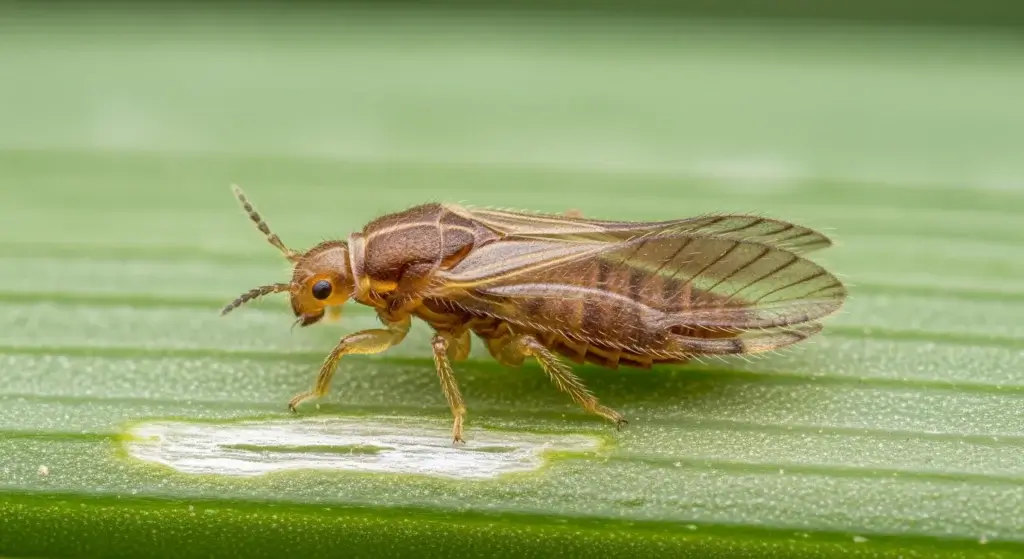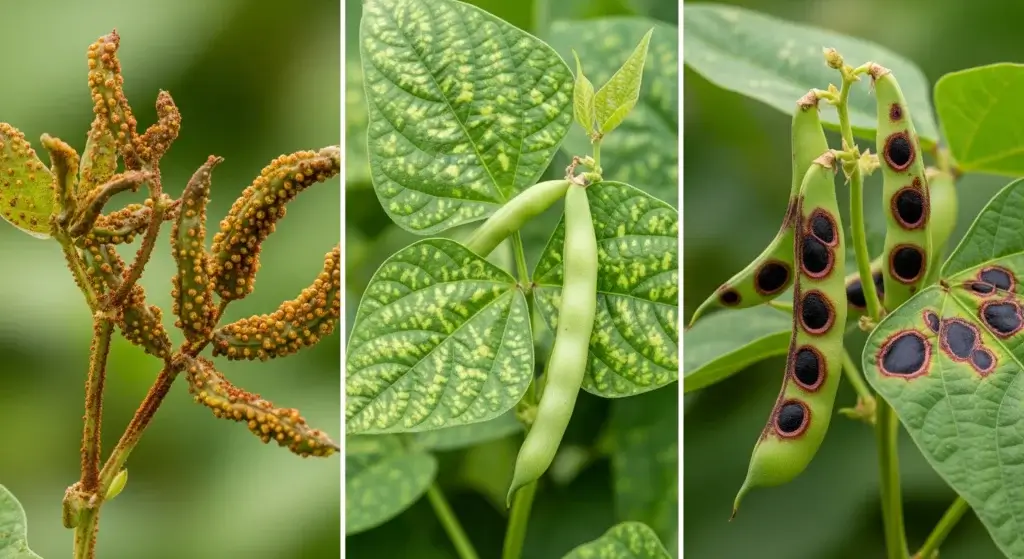
Lettuce is a favorite in salads everywhere.
Yet, even the most passionate gardeners can encounter problems with these leafy greens.
In this thorough guide, we’ll look at different environmental challenges, pests, and diseases that might affect your lettuce, and offer practical solutions to help your garden flourish.
By understanding these potential issues and their fixes, you can keep your lettuce healthy and enjoy fresh, crisp harvests all season long.
Environmental Problems
Environmental factors play a significant role in the health and productivity of lettuce plants.
Here are some common environmental problems you might encounter:
- Read also: Growing Green: A Guide to Natural Pesticides for Lettuce
- Read also: Different Lettuce Types: Everything You Need to Know
Bolting
Bolting occurs when lettuce prematurely flowers and goes to seed, often due to high temperatures or long daylight hours.
This process leads to bitter-tasting leaves and a tough texture. Unfortunately, you can’t completely stop a lettuce plant from bolting eventually.
However, there are ways to prevent lettuce from bolting:
- Choose bolt-resistant lettuce varieties.
- Provide consistent moisture to keep soil cool.
- Mulch around plants to retain soil moisture and regulate temperature.
- Use shade cloth during hot weather to protect plants from intense sunlight.
- Avoid overcrowding, ensure that lettuce plants have sufficient space to grow.
Tipburn
Tipburn is a physiological disorder caused by a calcium deficiency, often resulting from inconsistent watering or rapid growth.
Tipburn causes browning and death of leaf tissue, particularly at the edges and tips of the inner leaves.
While it doesn’t affect the safety of the lettuce for consumption, it reduces its visual appeal and marketability.
Here’s are ways to prevent lettuce from tipburn:
- Maintain consistent soil moisture to avoid stress and ensure proper calcium uptake.
- Avoid high nitrogen fertilizers that promote rapid growth.
- Ensure proper spacing for adequate air circulation.
- Using shade cloth to regulate temperature and slow down rapid growth.
- Apply calcium-rich fertilizers or supplements as needed.
Heat stress
Lettuce is a cool-season crop and is sensitive to high temperatures.
Heat stress can cause wilting, yellowing, bolting, reduced quality, and increased susceptibility to disease.
Here are steps to minimize heat stress in lettuce:
- Plant lettuce in early spring or fall to avoid peak summer heat.
- Provide shade using shade cloth or planting in partially shaded areas.
- Mulch to keep soil cool and retain moisture.
- Water regularly, especially during hot spells.
Germination problems
Lettuce seeds can be fussy about germinating due to a few key factors.
These include high temperatures, inconsistent moisture levels, and the seeds’ need for light to sprout. Here are some solutions to address these challenges:
- Keep the soil cool by planting in early spring or late summer.
- Ensure the soil stays consistently moist but not waterlogged.
- Sow seeds on the soil surface and lightly press them down without covering, so they get the light they need.
Leggy lettuce
Leggy lettuce refers to seedlings that have grown tall and thin with weak stems.
The main culprit behind leggy lettuce is a lack of sufficient light. Here’s what you can do to prevent it:
- Ensure your lettuce seedlings receive at least 12-16 hours of bright light daily.
- If relying on indoor light, consider using a dedicated grow light for seedlings.
- Sow lettuce seeds outdoors in early spring or fall when natural daylight hours are sufficient.
- Don’t overcrowd seedlings in a pot or tray.
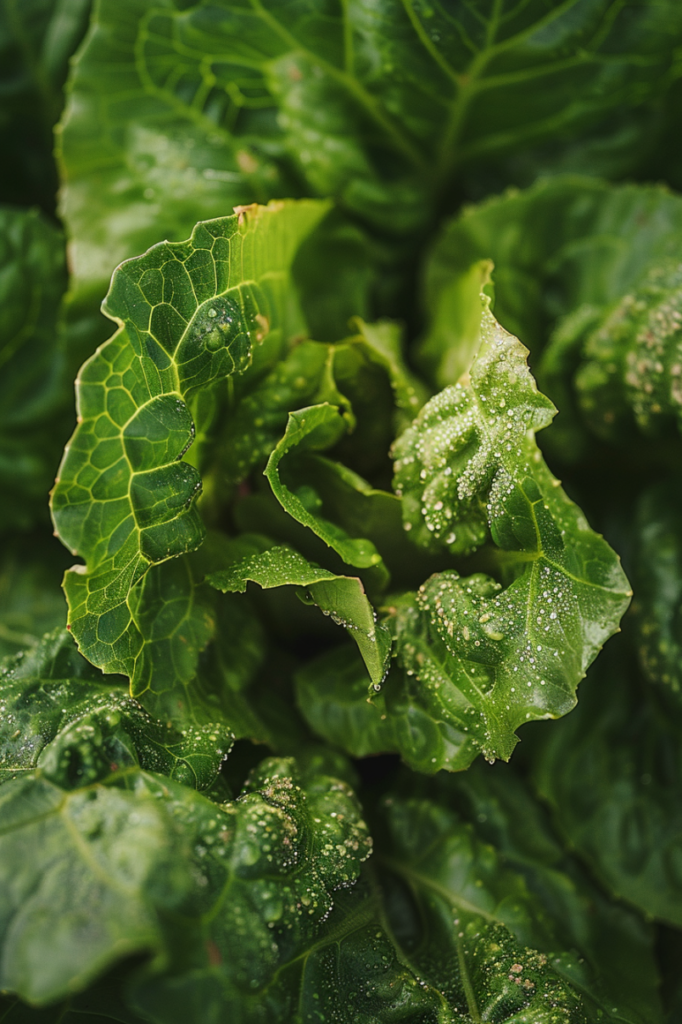
Lettuce Pests
Lettuce can be a tasty target for a variety of insects, invertebrates, and even some small mammals.
Here are some common pests to watch out for:
Caterpillars
These include cutworms, armyworms, and cabbage loopers.
They munch on leaves and can cause significant damage.
Handpick caterpillars whenever possible.
Use insecticidal soap or neem oil spray for larger infestations.
Introduce beneficial insects like ladybugs or lacewings which can help control caterpillar populations naturally.
Beetles
Flea beetles and darkling beetles feed on leaves, leaving holes and ragged edges.
Row covers can help deter beetles from reaching your lettuce plants.
Diatomaceous earth or insecticidal soap can also be used for control.
Slugs and snails
These slimy creatures leave a glistening trail and chew large holes in leaves.
Use physical barriers like copper tape or crushed eggshells around your lettuce plants.
Beer traps or organic slug bait can also be effective.
Aphids
These tiny green, yellow, or black insects suck sap from leaves, causing them to curl and distort.
They can also transmit diseases.
Introduce beneficial insects like ladybugs or parasitic wasps to control aphid populations naturally.
You can also use insecticidal soap spray for a direct approach.
Leafminers
These insects create tunnels within the leaves, causing white, winding trails.
Neem oil spray or insecticidal soap can help control leaf miners.
You can also try covering your lettuce plants with row covers to prevent them from laying eggs.
Rabbits and groundhogs
These larger herbivores can decimate a lettuce crop.
Fencing around your garden is the most effective way to deter these animals.
Hardware cloth buried at the base of the fence can prevent them from burrowing under.
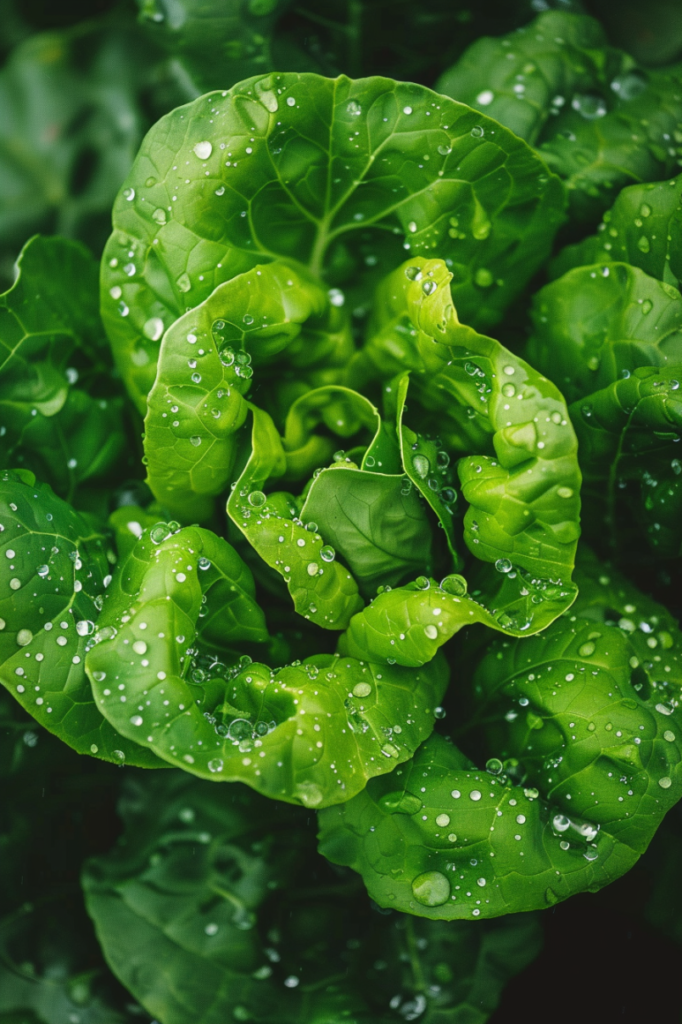
Lettuce Diseases
Lettuce, like many other crops, is susceptible to various diseases caused by fungi, bacteria, and even viruses.
These diseases can spread quickly in lettuce, often causing significant damage if not addressed promptly.
Here are some common lettuce diseases and how to manage them:
Downy mildew
This fungal disease causes yellow or light green blotchy areas on the upper surfaces of leaves, with a fuzzy white or grayish mold growth on the undersides.
It thrives in cool, wet conditions. It causes yellowish or light green blotches with fuzzy white or grayish mold on undersides of leaves.
Practice good air circulation, avoid overhead watering, use disease-resistant varieties, and remove and destroy infected plants.
Botrytis gray mold
This fungal disease causes water-soaked areas on leaves that turn grayish green or brown and eventually become covered in a fuzzy gray mold.
It thrives in humid conditions.
At the part of the lettuce that water-soaked areas are turning brown with fuzzy gray mold.
Maintain good air circulation, avoid overhead watering, remove infected plant parts promptly, and consider using fungicides labeled for lettuce.
Bottom rot (Rhizoctonia solani)
This fungal disease causes wilting of outer leaves and brown lesions on the stems at the soil line.
It thrives in cool, wet soils.
The symptoms are wilting outer leaves and brown lesions on stems near the soil line.
Practice crop rotation, improve drainage, avoid planting in overly wet soil, and use disease-resistant varieties.
Bacterial leaf spot
This bacterial disease causes small, water-soaked spots on leaves that turn brown or yellow with a greasy appearance.
It causes small, water-soaked spots on leaves that turn brown or yellow with a greasy appearance.
Use disease-free seeds, practice crop rotation, and water plants at the base to avoid wetting the leaves.
Lettuce mosaic virus
This virus causes stunted growth, distorted leaves with mottled yellow and green patterns, and may reduce yields significantly.
It can cause stunted growth, distorted leaves with mottled yellow and green patterns.
There’s no cure, so prevention is key.
Use certified disease-free seeds, control weeds that can harbor the virus, and remove and destroy infected plants.
Rust
Rust disease is a fungal infection that can harm many plants, including lettuce.
You can identify it by the orange, yellow, or brown pustules that appear on the leaves, stems, and sometimes flowers.
These pustules release spores, spreading the infection to other plants.
To prevent rust disease, you need to create conditions that discourage fungal growth.
Here are some steps you can take:
- Plant lettuce with adequate spacing to ensure good air circulation.
- Water the soil directly rather than the leaves. Use drip irrigation if possible.
- Apply mulch around plants to reduce soil splash and maintain consistent soil moisture.
- Remove and dispose of plant debris, especially infected leaves, to reduce sources of infection.
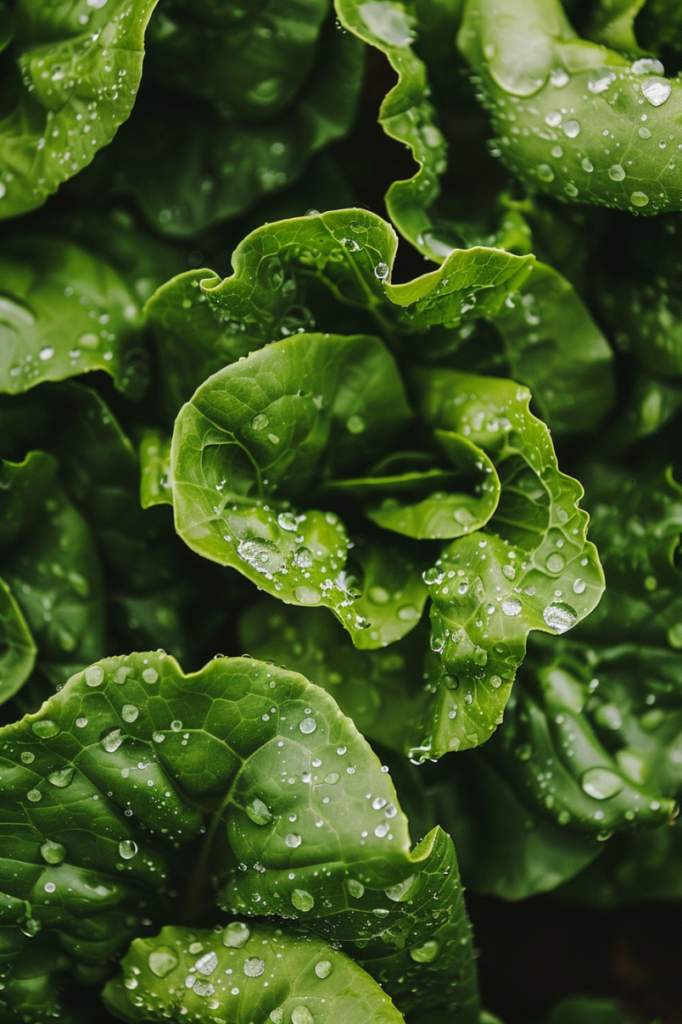
- Read also: Tips for a Thriving Harvest: Watering Lettuce in the Garden
- Read also: The Ultimate Guide to Growing Lettuce in Containers
Conclusion
By understanding and addressing these common lettuce problems, you can ensure a healthier and more productive garden.
Regular monitoring, proper care, and timely interventions are key to preventing and managing these issues.
Remember, a little attention and effort go a long way in maintaining the health and vitality of your lettuce plants.


